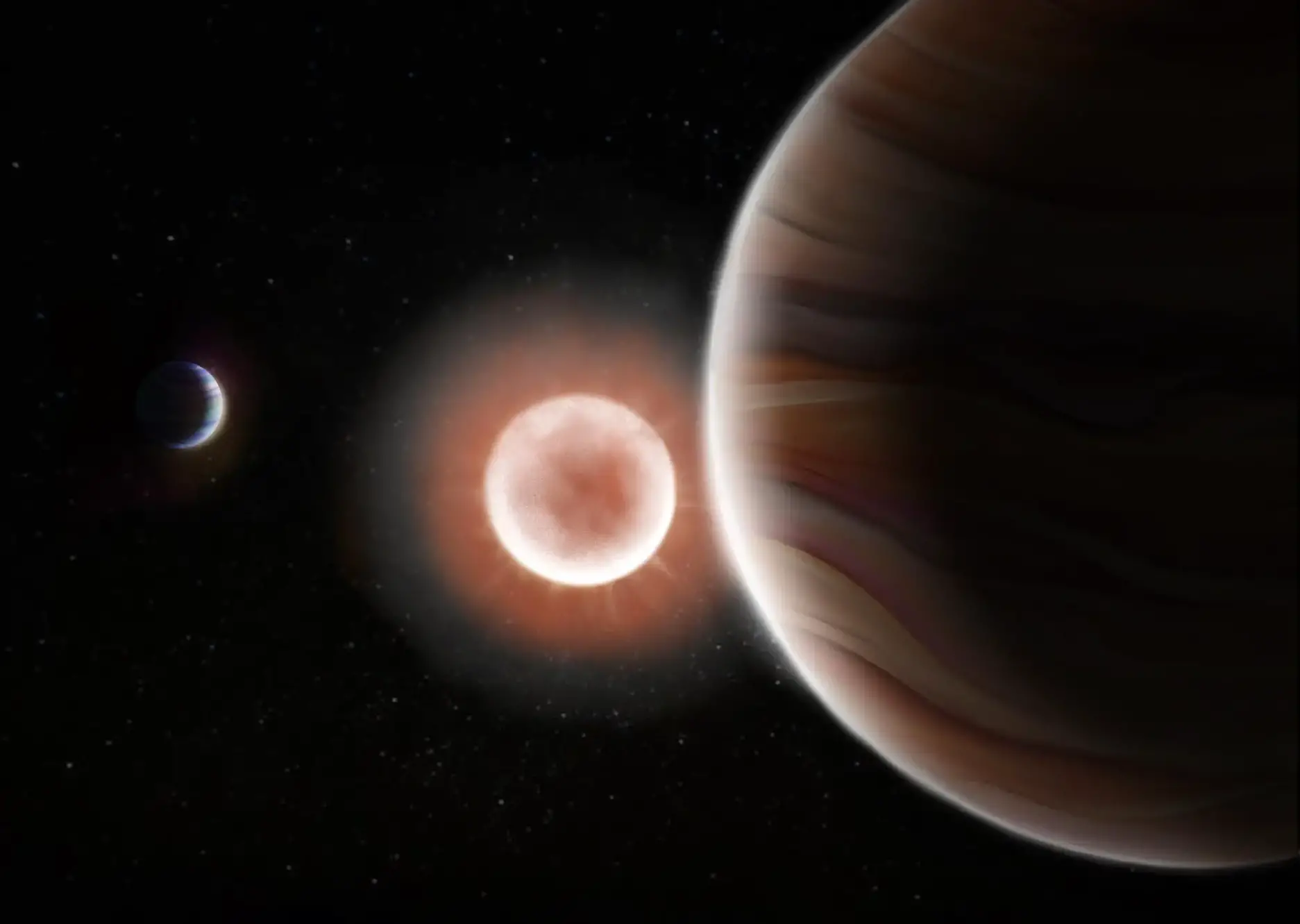Scientists under the guidance of volunteers of the TESS “Planet Hunters” project have found an exoplanet with remarkable parameters. Due to the limitations of the instruments, astronomers have rarely encountered such objects until now, so the new system has attracted great interest from astronomers.
There are two well-known ways to detect exoplanets: a decrease in the star’s brightness, with the planet barely blocking its light during transit, and “feeding” the star from gravitational interaction with the planet. The transit method can “catch” planets with short periods (with a short year) because they are more likely to capture a “rhythm” during observations. Thus, only 9.7 percent of all confirmed exoplanets have an orbital period longer than 50 days, and only 1.6 percent have an orbital period longer than 200 days. A small part of it was opened for transit. More than 70 percent of exoplanets in orbits larger than Earth’s orbit have been discovered by the radial velocity of the armature, the “feeder” star.
The problem with the method of radial velocities is that it does not provide the possibility of estimating the radius of the planet and obtaining its density. It is also impossible to perform spectral analysis of the atmosphere. These parameters are important for assessing the potential habitability of an exoplanet, and the study of life activity in the Universe is the main motivation for such studies.
In a new study published in the journal Astronomy MagazineAstronomers have identified the long-period planet TOI 4633c captured by the transit method. It is a mini-Neptune whose year lasts approximately 272 Earth days. During this time, it makes a revolution around a yellow dwarf, a Sun-like star. The star has a friend – the same yellow dwarf. Judging by their “nurture”, there is currently another possible exoplanet in the system, TOI 4633 b, with a period of about 34 days. They are approximately 309.8 light-years (95 parsecs) away from us.
Unfortunately, the double star’s companions are now too close together to clearly “split” their light. Using computer simulations and analysis of observational data, the authors of the new study were able to determine that the planets do not orbit exactly around either star. Either both planets orbit one of the stars, or each star has its own planet.
Due to the “lumped” emission of stars in observational data, it is impossible to accurately determine the parameters of a long-period mini-Neptune. Its radius is approximately 3.2 times larger than Earth and 47 times larger. This lower estimate of mass has a fairly wide spread, but scientists confidently state that the upper limit is 123 Earth masses. For comparison: Jupiter has a mass of 317.8 Earth masses, Saturn has a mass of 95 Earth masses, and Neptune has a mass of 17.15 Earth masses.
Mini-Neptune flies slightly closer to the star (0.847 AU) than Earth. At this distance, it receives approximately 1.56 times as much light as our planet. With zero greenhouse effect, the equilibrium surface temperature is approximately 16.8 degrees Celsius (290 Kelvin). When two stars are as close to each other as possible, the planet heats up to 146 degrees Celsius (420 Kelvin). However, such a large planet must have a solid atmosphere, so in practice the temperature there is higher due to the greenhouse effect.
TOI 4633 c lies at the inner edge of the yellow dwarf’s habitable zone. Theoretically, there could be liquid water there, but this is unlikely because the atmosphere is so vast and dense. But the greater the distance to the star, the higher the likelihood that the planet will have moons. And satellites can have very favorable conditions.
“If a planet has a moon, then that moon likely has a solid surface, and that’s a great place to look for water,” said Nora Eisner, an astronomer at the Center for Computational Astrophysics and lead author of the new paper. at Flatiron Research Institute (USA).
The TOI 4633 system differs from its counterparts in three aspects. The first is that it has a long-term planet in the habitable zone. The latter is the brightest known star with transiting planets in the habitable zone. Third, the two stars are comparable in mass.
By examining the composition of such “twin” stars, you can find differences that would indicate the presence of planets in the system. Then astronomers will have another way to look for exoplanets.
The fact that TOI 4633 is a double star was determined by the authors of the new paper based on ten archival observations from 1905 to 2011. The luminaires are on average approximately 48.6 AU apart. Their orbital period is approximately 231 Earth years. For comparison: a long orbit takes Pluto to a distance of about 49.3 astronomical units from the Sun, the orbital period is 248 Earth years.
According to scientists’ calculations, in about 30 years the stars will be so far away from each other that they can be distinguished by telescopes on the ground. Thus, astronomers will be able to understand the structure of this interesting system and examine both its stars and exoplanets in more detail.













